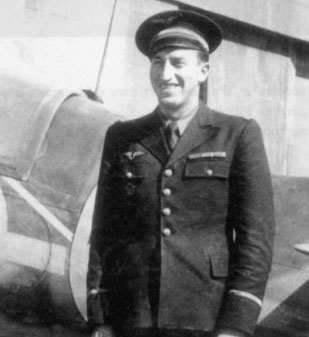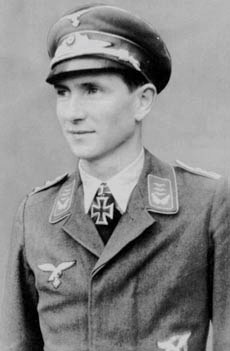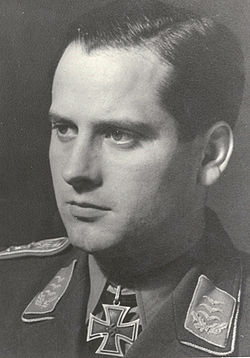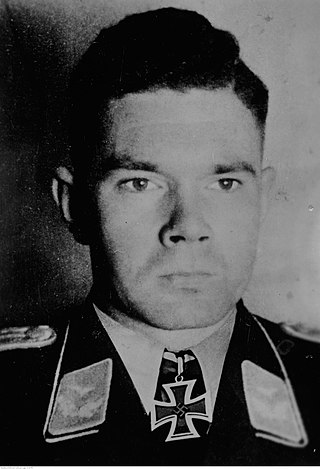
The Curtiss P-40 Warhawk is an American single-engined, single-seat, all-metal fighter-bomber that first flew in 1938. The P-40 design was a modification of the previous Curtiss P-36 Hawk which reduced development time and enabled a rapid entry into production and operational service. The Warhawk was used by most Allied powers during World War II, and remained in frontline service until the end of the war. It was the third most-produced American fighter of World War II, after the North American P-51 Mustang and Republic P-47 Thunderbolt; by November 1944, when production of the P-40 ceased, 13,738 had been built, all at Curtiss-Wright Corporation's main production facilities in Buffalo, New York.

The Morane-Saulnier M.S.406 is a French fighter aircraft developed and manufactured by Morane-Saulnier starting in 1938. It was France's most numerous fighter during the Second World War and one of only two French designs to exceed 1,000 in number. At the beginning of the war, it was one of only two French-built aircraft capable of 400 km/h (250 mph) – the other being the Potez 630.

Pierre Le Gloan was a French flying ace of World War II. Unique in the annals of wartime flying, he scored victories against German, Italian and British forces. Flying in the French and Vichy French air forces, his career has led some to call him the only pilot to become a flying ace on both sides of the war. He was killed in a landing accident in September 1943.

Salon-de-Provence Air Base is a base of the French Air and Space Force located 4 km (2.5 mi) south Salon-de-Provence, Bouches-du-Rhône in southern France.

Witold Łokuciewski was a Polish fighter ace of the Polish Air Force in World War II who was given the nickname Tolo.

Wilhelm Balthasar was a German Luftwaffe military aviator and wing commander during World War II. As a fighter ace, he is credited with seven aerial victories during the Spanish Civil War and further 40 aerial victories on the Western Front of World War II. He flew about 300 combat missions during World War II in addition to 465 in Spain.

Edmond Marin la Meslée was a French fighter pilot in World War II. 5th highest-scoring French ace of the conflict with 16 aerial victories, he was the most successful French air ace of the French campaign with sixteen confirmed air victories between January and June 1940. Roland Dorgelès presented him as the "Guynemer of the 1939-1945 war".

The Free French Air Forces were the air arm of the Free French Forces in the Second World War, created by Charles de Gaulle in 1940. The designation ceased to exist in 1943 when the Free French Forces merged with General Giraud's forces. The name was still in common use however, until the liberation of France in 1944, when they became the French Air Army. Martial Henri Valin commanded them from 1941 to 1944, then stayed on to command the Air Army.
Wolfgang Tonne was a German Luftwaffe military aviator and fighter ace during World War II. He is credited with 122 aerial victories—that is, 122 aerial combat encounters resulting in the destruction of the enemy aircraft—achieved in 641 combat missions. This figure includes 96 aerial victories on the Eastern Front, and further 26 victories over the Western Allies, including one four-engined bomber.

Gerhard Schöpfel was a German Luftwaffe military aviator and wing commander during World War II. As a fighter ace, he is credited with 45 aerial victories claimed in approximately 700 combat missions, all of which on the Western Front.
Alfred Heckmann was a Luftwaffe flying ace of World War II. A flying ace or fighter ace is a military aviator credited with shooting down five or more enemy aircraft during aerial combat. He was also a recipient of the Knight's Cross of the Iron Cross. The Knight's Cross of the Iron Cross was awarded to recognise extreme battlefield bravery or successful military leadership.

Heinz Ebeling was a German Luftwaffe military aviator and fighter ace during World War II. He is credited with 18 aerial victories achieved in 163 combat missions, all of which claimed over the Western Allies during the Battle of France and Battle of Britain.
Ernst Düllberg was a former German Luftwaffe fighter ace and recipient of the Knight's Cross of the Iron Cross during World War II. Ernst Düllberg was credited with 45 victories in 650 combat missions, 36 over Western Front and 9 victories over the Eastern Front.
Louis Delfino was a French fighter ace in World War II and a General in the French Air Force.
Erich Woitke was a fighter pilot 'ace' serving in the German Luftwaffe during World War II.

Sophus Baagoe was a German fighter pilot in the Luftwaffe and fought during World War II. Baagoe was credited with fourteen aerial victories, making him a fighter ace. A fighter ace is a military aviator credited with shooting down five or more enemy aircraft during aerial combat.

Pierre Pouyade was a French Air Force general, World War II flying ace, and a commander of the Normandie-Niemen squadron. By the end of the War he had scored eight solo victories and two group victories, all but one on the Eastern Front.
The Polish Fighter Squadron, also known by its designation GC I/145, was the largest fighter unit of the Polish Air Forces in France. Formed of Polish pilots who evaded capture by the Nazis and the Soviets in the aftermath of the Invasion of Poland of 1939, the unit was initially earmarked to be sent to Finland as part of the aborted plan of Allied intervention in the Winter War. Eventually it took part in the Battle of France defending the French skies along with the allied armies.

Michał Cwynar DFC was a Polish fighter ace of the Polish Air Force in World War II with 5 confirmed kills and one shared.

Mieczysław Adamek DFC was a Polish fighter ace of the Polish Air Force in World War II with 5 confirmed kills, 2 shared and 1 probable. He was awarded the Virtuti Militari, Poland's highest military decoration for heroism and courage in the face of the enemy at war, on 20 February 1941 and fought in the Polish Defensive War, the Battle of France, and the Allied invasion of continental Europe, before being killed in action on 18 May 1944.














